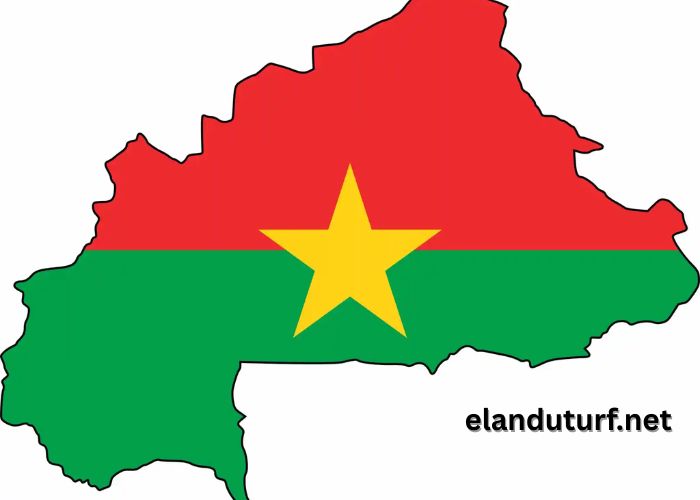Carte Du Burkina Faso is more than just a geographical tool—it represents a deep insight into the nation’s cultural, political, and environmental makeup. It reveals everything from bustling urban zones to remote, serene villages.
The beauty of Carte Du Burkina Faso lies in its ability to simplify complex geography for everyone—from students and educators to travelers and government officials. It helps visualize how every part of the country connects and functions.
What Is Carte Du Burkina Faso And Why Is It Important?
Carte Du Burkina Faso is a detailed map representation of Burkina Faso, showcasing its cities, roads, rivers, borders, provinces, and topographical features. This map is essential for educational purposes, administrative planning, infrastructure development, and travel organization. It allows users to understand the distribution of resources, population centers, and natural landmarks across the country, making it a vital reference for locals and foreigners alike.
The importance of Carte Du Burkina Faso lies in its ability to provide a comprehensive view of the country’s structure and terrain. Government agencies rely on it for regional planning and emergency response, while tourists use it to explore the country safely and efficiently. Its inclusion in textbooks, atlases, and online platforms shows its relevance across generations and industries. Every new version of Carte Du Burkina Faso is updated with the latest data to reflect the nation’s growth.
How Has Carte Du Burkina Faso Evolved Over Time?
Over the decades, Carte Du Burkina Faso has transformed from simple hand-drawn maps to digital, GPS-integrated visuals available online. Early versions were created using traditional surveying methods, which were limited in detail and accuracy. However, technological advancement brought satellite imagery and Geographic Information Systems (GIS), drastically improving the precision and visual quality of each new edition of Carte Du Burkina Faso.
The evolution of Carte Du Burkina Faso also includes thematic maps such as political boundaries, climate zones, road networks, and demographic layouts. These thematic expansions have made it more than a navigation tool—it’s now a dynamic resource used in urban planning, agriculture, health services, and economic development. With online access and mobile-friendly formats, Carte Du Burkina Faso is now accessible anytime, anywhere, offering interactive experiences for users worldwide.
What Can You Learn From Carte Du Burkina Faso?
Carte Du Burkina Faso teaches users about the country’s regional divisions, with 13 administrative regions and 45 provinces clearly marked. It helps people understand which cities are closest to national parks, trade routes, or border crossings. It’s a powerful tool for researchers investigating socio-economic disparities, natural resource management, and population distribution. Through its layers, Carte Du Burkina Faso brings visibility to often-overlooked rural areas and allows for deeper geographical awareness.
Learning from Carte Du Burkina Faso also includes interpreting topographical elevation and hydrographic networks, such as rivers like the Mouhoun, Nazinon, and Nakambé. These rivers are not only geographic markers but vital lifelines that influence agriculture and daily life. Students can study historical colonial borders, while professionals use Carte Du Burkina Faso to assess regional connectivity, access to services, and logistical challenges in remote zones.
How Can Travelers Use Carte Du Burkina Faso Effectively?
Travelers can use Carte Du Burkina Faso to navigate from one city or village to another, identifying routes, distances, and travel conditions. It shows major highways like N1, N2, and N4 that connect key regions including Ouagadougou, Bobo-Dioulasso, and Kaya. Tourist hotspots, cultural heritage sites, and ecological reserves are highlighted, helping adventurers plan efficient and memorable itineraries. With road conditions marked in some versions, travelers can also determine which routes are best during dry or rainy seasons.
Digital versions of Carte Du Burkina Faso are now equipped with GPS compatibility, offering real-time positioning and direction. Apps using Carte Du Burkina Faso allow for offline navigation in rural areas where mobile networks may be weak. Travelers benefit from visual cues, distance estimations, and security insights depending on the region. Whether for a weekend getaway or cross-country tour, Carte Du Burkina Faso is an indispensable companion for planning and on-the-ground navigation.
How Does Carte Du Burkina Faso Support Education?
Carte Du Burkina Faso plays a crucial role in education across all levels, from primary schools to universities. In geography classes, it’s used to teach students about location awareness, regional identity, and natural features. Teachers use printed and digital formats of Carte Du Burkina Faso to explain political borders, resource locations, and historical developments. With a visual aid like this, students grasp concepts better and engage more actively with their lessons.
Beyond geography, Carte Du Burkina Faso is also relevant in history, sociology, and economics. For example, students studying population trends can correlate data with urban centers shown on the map. It also fosters a sense of national identity, as young learners familiarize themselves with the towns and provinces of their homeland. Educational institutions frequently use wall-sized versions of Carte Du Burkina Faso in classrooms to provide a constant spatial reference that supports learning outcomes.
Can Carte Du Burkina Faso Help In Development Planning?
Absolutely. Carte Du Burkina Faso is essential in national development planning, used by ministries, NGOs, and international partners. It aids in planning new roads, identifying underserved communities, and allocating infrastructure projects. Health workers use Carte Du Burkina Faso to reach remote villages, while agricultural planners map rainfall zones, soil types, and farming activities. With visual clarity and data integration, decision-makers rely on Carte Du Burkina Faso to direct resources where they’re needed most.
Planners can overlay data layers on Carte Du Burkina Faso to analyze issues like poverty, education access, water distribution, and healthcare facilities. This multi-functional use makes it a key tool for sustainable development. Civil engineers use it for project assessments, environmentalists for tracking deforestation, and telecom companies for extending connectivity. As Burkina Faso grows and faces new challenges, Carte Du Burkina Faso remains a critical framework for managing the country’s future.
Conclusion
Carte Du Burkina Faso is more than just a map—it’s a vital national resource that supports learning, travel, planning, and development. It bridges past and future by documenting the country’s geography while adapting to technological advancements.
Whether used by students in classrooms, travelers on the road, or planners shaping the nation’s future, Carte Du Burkina Faso continues to guide, inform, and empower those who rely on it.



